Abstract
The guidelines proposed by Laupacis and associates do not stem from economic theory and are a prescription for uncontrolled growth in health care expenditure. In particular, cost-effectiveness ratios provide information relevant to allocation decisions only in very special circumstances that do not usually apply in practice. When two interventions are compared a positive cost-effectiveness ratio (the common case) can tell us, at best, what additional costs will be incurred to generate the additional outcomes. From an economic perspective the information required to determine the attractiveness of a new technology is different: the source of the additional resource requirements must be identified and the opportunity cost of their redeployment estimated. Because the cost-effectiveness ratio (cost/-QALY) is sensitive to the method chosen to calculate QALYs, guidelines that do not specify (or justify) the appropriate method for calculating outcomes are unlikely to produce comparable results (or common yardsticks). In a health care system such as Canada's in which there is always pressure to introduce more effective technology, even if it is more costly, there is a risk of using such noncomparable data to justify adoption of particular technologies. The method of technology evaluation proposed by us is consistent with the stated goal of maximizing the community's health-related well-being for a given level of resources allocated to health care and ensures that new technologies are adopted only if this adoption represents an improvement in resource allocation.
Full text
PDF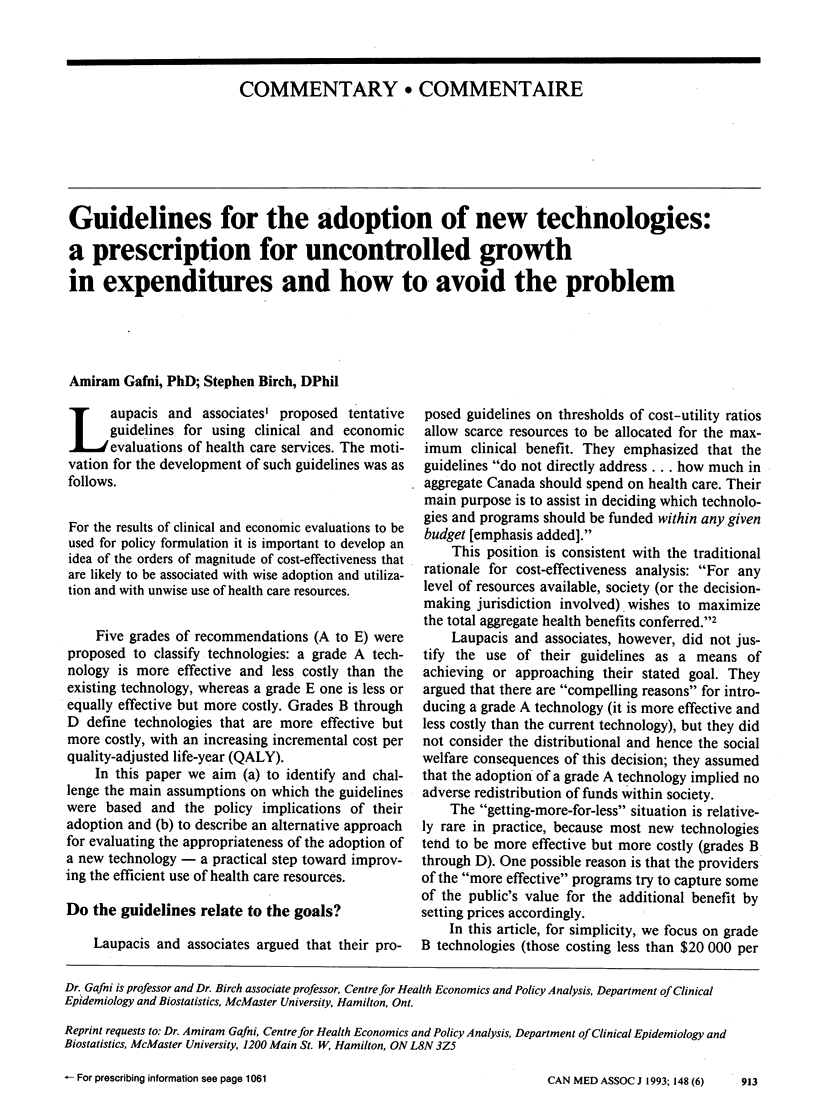
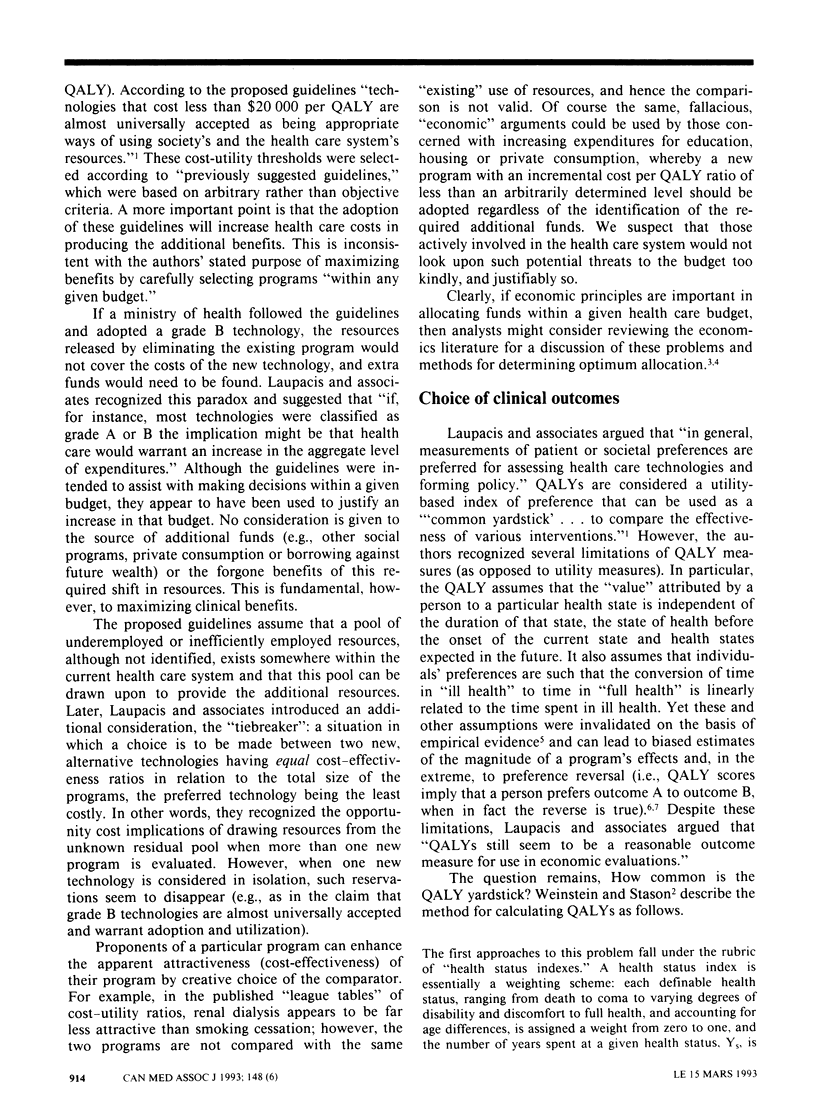
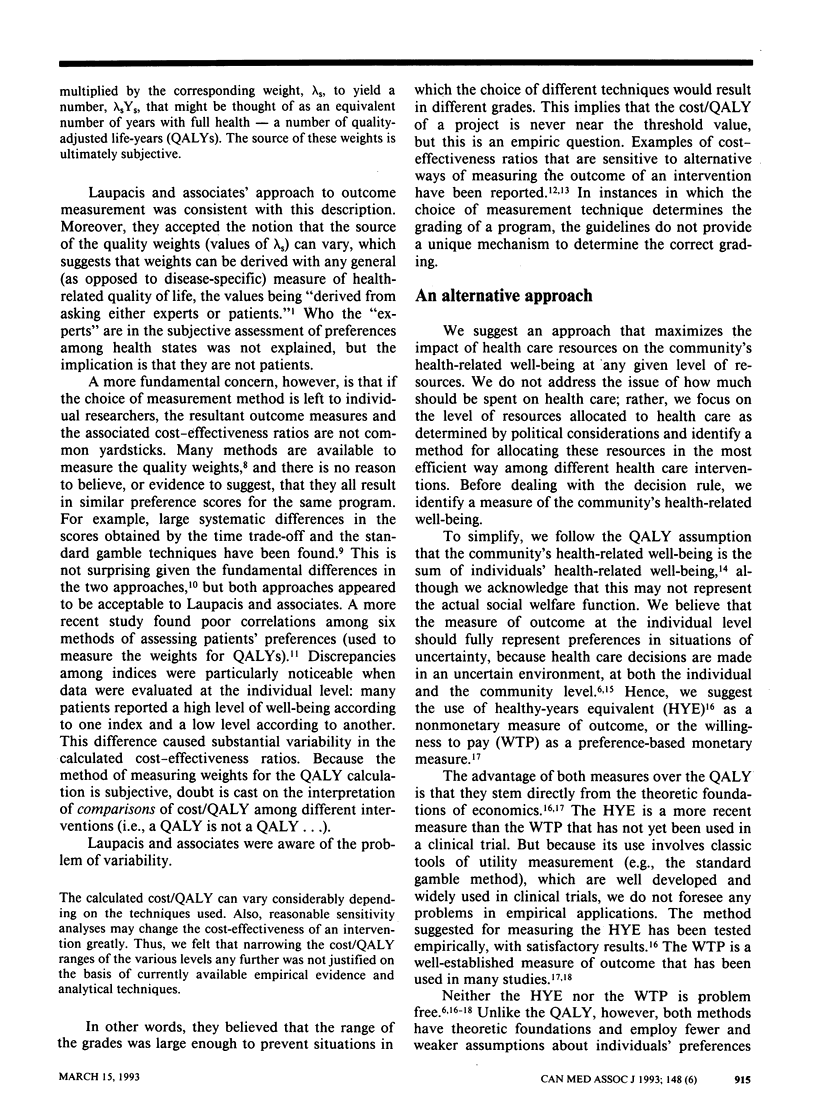
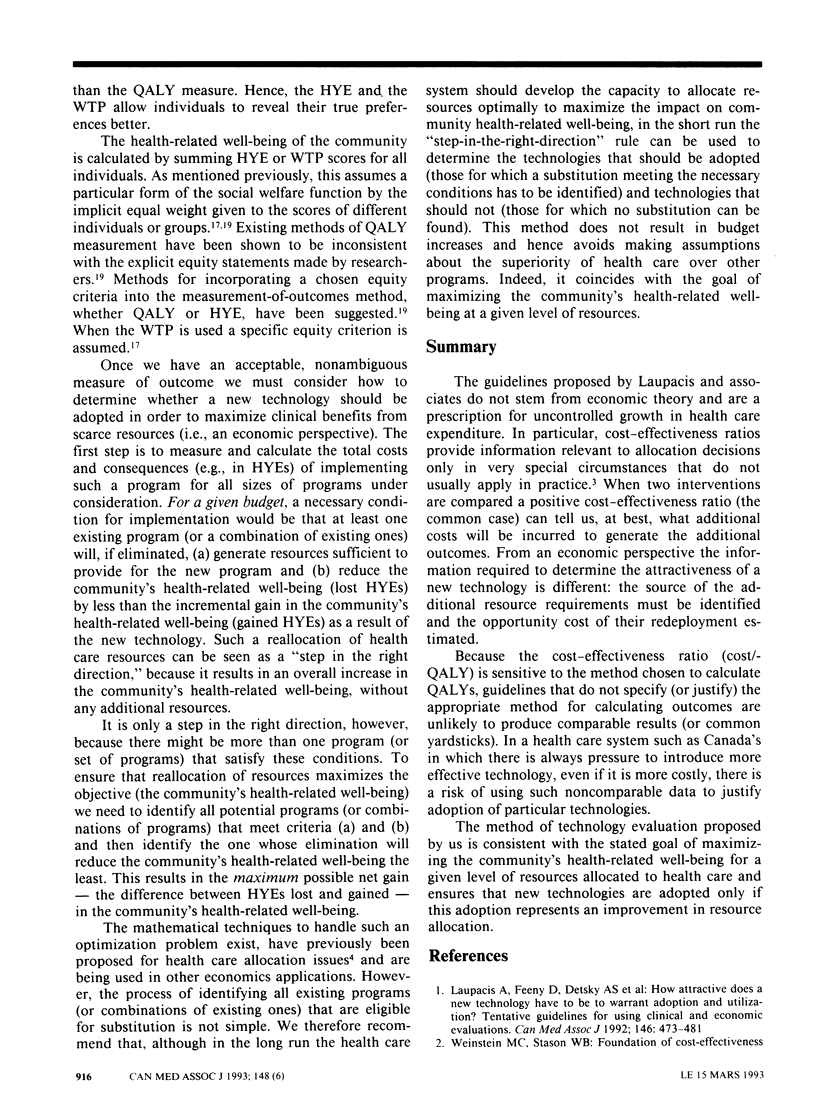
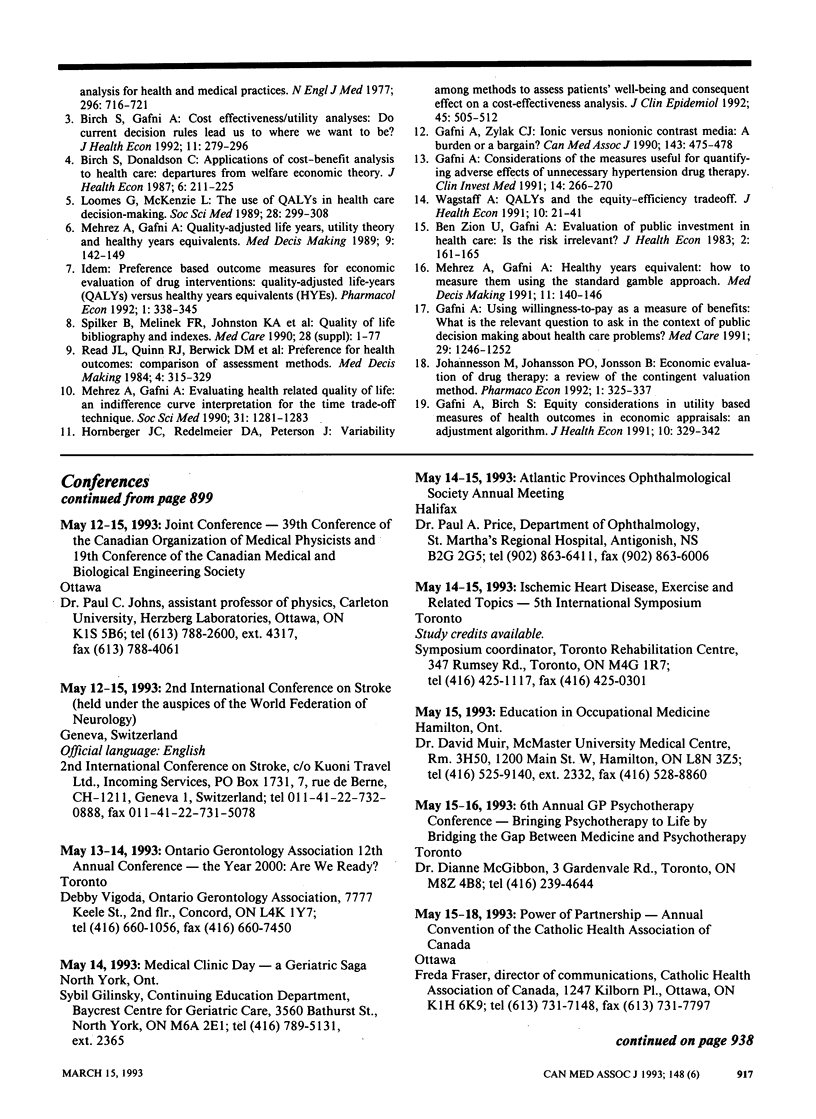
Selected References
These references are in PubMed. This may not be the complete list of references from this article.
- Ben-Zion U., Gafni A. Evaluation of public investment in health care. Is the risk irrelevant? J Health Econ. 1983 Aug;2(2):161–165. doi: 10.1016/0167-6296(83)90005-x. [DOI] [PubMed] [Google Scholar]
- Birch S., Donaldson C. Applications of cost-benefit analysis to health care. Departures from welfare economic theory. J Health Econ. 1987 Sep;6(3):211–225. doi: 10.1016/0167-6296(87)90009-9. [DOI] [PubMed] [Google Scholar]
- Birch S., Gafni A. Cost effectiveness/utility analyses. Do current decision rules lead us to where we want to be? J Health Econ. 1992 Oct;11(3):279–296. doi: 10.1016/0167-6296(92)90004-k. [DOI] [PubMed] [Google Scholar]
- Gafni A., Birch S. Equity considerations in utility-based measures of health outcomes in economic appraisals: an adjustment algorithm. J Health Econ. 1991 Oct;10(3):329–342. doi: 10.1016/0167-6296(91)90033-j. [DOI] [PubMed] [Google Scholar]
- Gafni A. Measuring the adverse effects of unnecessary hypertension drug therapy: QALYs vs HYE. Clin Invest Med. 1991 Jun;14(3):266–270. [PubMed] [Google Scholar]
- Gafni A. Willingness-to-pay as a measure of benefits. Relevant questions in the context of public decisionmaking about health care programs. Med Care. 1991 Dec;29(12):1246–1252. [PubMed] [Google Scholar]
- Gafni A., Zylak C. J. Ionic versus nonionic contrast media: a burden or a bargain? CMAJ. 1990 Sep 15;143(6):475–478. [PMC free article] [PubMed] [Google Scholar]
- Hornberger J. C., Redelmeier D. A., Petersen J. Variability among methods to assess patients' well-being and consequent effect on a cost-effectiveness analysis. J Clin Epidemiol. 1992 May;45(5):505–512. doi: 10.1016/0895-4356(92)90099-9. [DOI] [PubMed] [Google Scholar]
- Johannesson M., Johansson P. O., Jönsson B. Economic evaluation of drug therapy: a review of the contingent valuation method. Pharmacoeconomics. 1992 May;1(5):325–337. doi: 10.2165/00019053-199201050-00004. [DOI] [PubMed] [Google Scholar]
- Loomes G., McKenzie L. The use of QALYs in health care decision making. Soc Sci Med. 1989;28(4):299–308. doi: 10.1016/0277-9536(89)90030-0. [DOI] [PubMed] [Google Scholar]
- Mehrez A., Gafni A. Evaluating health related quality of life: an indifference curve interpretation for the time trade-off technique. Soc Sci Med. 1990;31(11):1281–1283. doi: 10.1016/0277-9536(90)90137-h. [DOI] [PubMed] [Google Scholar]
- Mehrez A., Gafni A. Quality-adjusted life years, utility theory, and healthy-years equivalents. Med Decis Making. 1989 Apr-Jun;9(2):142–149. doi: 10.1177/0272989X8900900209. [DOI] [PubMed] [Google Scholar]
- Mehrez A., Gafni A. The healthy-years equivalents: how to measure them using the standard gamble approach. Med Decis Making. 1991 Apr-Jun;11(2):140–146. doi: 10.1177/0272989X9101100212. [DOI] [PubMed] [Google Scholar]
- Read J. L., Quinn R. J., Berwick D. M., Fineberg H. V., Weinstein M. C. Preferences for health outcomes. Comparison of assessment methods. Med Decis Making. 1984;4(3):315–329. doi: 10.1177/0272989X8400400307. [DOI] [PubMed] [Google Scholar]
- Wagstaff A. QALYs and the equity-efficiency trade-off. J Health Econ. 1991 May;10(1):21–41. doi: 10.1016/0167-6296(91)90015-f. [DOI] [PubMed] [Google Scholar]
- Weinstein M. C., Stason W. B. Foundations of cost-effectiveness analysis for health and medical practices. N Engl J Med. 1977 Mar 31;296(13):716–721. doi: 10.1056/NEJM197703312961304. [DOI] [PubMed] [Google Scholar]


